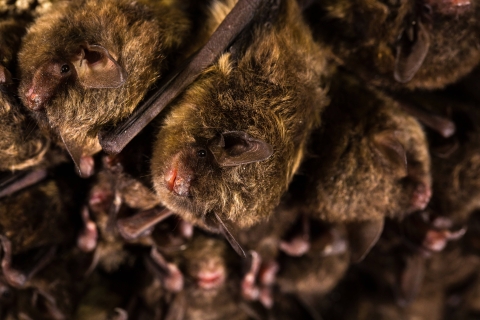States
GeorgiaWhat is mitigation?
Mitigation refers to projects or programs that help offset negative impacts to natural resources, such as a stream, wetland, and species-at-risk. When projects are unable to avoid adverse impacts to a threatened or endangered species, mitigation represents an alternative way to support conservation and comply with the Endangered Species Act. Developers may purchase "credits" for projects and programs that are conserving and restore valuable natural resources.
U.S. Fish and Wildlife Service Conservation Banking Program
Conservation banks are permanently protected lands that contain natural resources values. These lands are conservation and permanently managed for species that are endangered, threatened, candidates for listing, or are otherwise species-at-risk. Conservation banking offers opportunities for landowners through preservation, enhancement, resotration and/or establishment of habitat for species. In exchange for permanently protecting the land and managing it for these species, the U.S. Fish and Wildlife Service approved habitat or species credits that bank owners may sell. Developers and other project proponents who need to compensate for the unavoidable adverse impacts their projects have on species may purchase the credits from bank owners to mitigate their impacts. Learn more about the U.S. Fish and Wildlife Service's Conservation Banking program.
Georgia currently has one conservation bank. The Deerleap Preserve Conservation Bank was developed to support recovery and provide a mitigation option for unavoidable impacts to Cherokee darter (Etheostoma scotti), Etowah darter (E. etowahae), and amber darter (Percina antesella). The bank was approved in 2015 and reached the end of interim management period for the bank in 2021. The bank will now move into the long term management period supported in perpetuity by a non-wasting endowment.
U.S. Army Corps of Engineers Section 404 Mitigation Banking Program
The U.S. Army Corps of Engineers manages a mitigation banking program used to offset impacts to Waters of the U.S. for compliance with the Clean Water Act. Our office participates in the U.S. Army Corps of Engineers Savannah District's Interagency Review Team. We review potential sites for mitigation banks in Georgia that could most benefit at-risk, and Threatened and Endangered Species. A mitigation bank is a wetland, stream or other aquatic resource area that has been restored, established, enhanced, or preserved. This resource area is then set aside to compensate for future impacts to aquatic resources resulting from permitted activities. The value of a bank is determined by quantifying the aquatic resource functions restored, established, enhanced, and/or preserved in terms of "credits." Permittees, upon approval of regulatory agencies, can acquire these credits to meet their requirements for compensatory mitigation.
The Range-Wide Indiana Bat and Northern Long-Eared Bat In-Lieu Fee Program
The Range-wide Indiana and Northern Long-eared Bat In-Lieu Fee Program provides a practical mitigation option for unavoidable adverse impacts to Indiana and northern long-eared bats from transportation projects, as well as a mitigation option for other projects (e.g., pipeline, powerline other development) covered by a U.S. Fish and Wildlife Service-approved biological opinion or Habitat Conservation Plan. It also offsets adverse impacts to Indiana bats and promotes recovery of the species.



